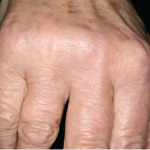CHICAGO—“Why do so many drugs fail in clinical trials?” asked Michael Brenner, MD, chief of rheumatology, immunology and allergy at Brigham and Women’s Hospital in Boston. This question, previously posed by Francis Collins, MD, PhD, director of the National Institutes of Health, prompted a discussion among scientists and stakeholders in the pharmaceutical industry. The conversation…




